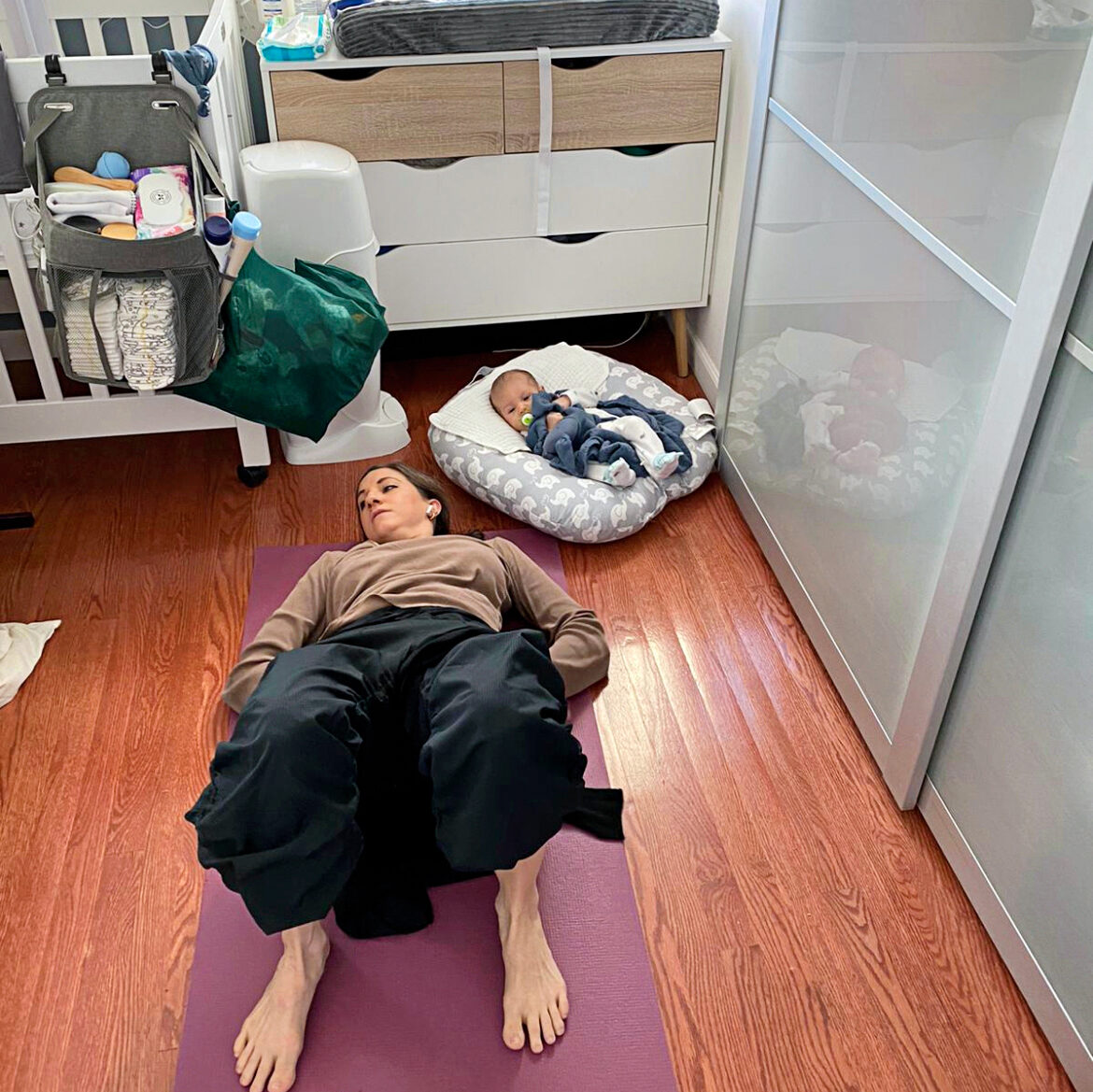Meet 4 High-Profile Pros Who Have Launched an Online Platform to Support Other Dancing Mothers
At first glance, these four dancers seem quite different: One is a Black ballerina from Brazil who moved to the States to train with and then join Dance Theatre of Harlem. Another is a Cleveland-born contemporary dancer who began her career in Chicago before relocating to New York and finding a home with YY Dance Company. The third is a modern dancer who studied Chinese folk and classical dance, immigrated to the U.S., and rose up the ranks of the Martha Graham Dance Company. And the last took a somewhat unorthodox path in ballet, earning her college degree before joining Ballet West and starring in the reality TV series “Breaking Pointe.”
Yet Ingrid Silva, Grace Whitworth, Xin Ying and Allison DeBona have a pivotal shared experience: In the last five years, they’ve all become mothers, then returned to the studio and stage. They’ve learned about balancing the demands of dance and motherhood in this new phase of their lives, while also finding joy in babies Laura, Walt, Frankie and Ajax. And they all believe in the power of turning to fellow dance moms for support—and in the possibility of reshaping the dance world to make it easier for those who come after them.
Silva, Whitworth, Xin and DeBona found strength and comfort in a private WhatsApp group for dozens of dance moms started by Lauren Post of American Ballet Theatre. This past fall, they took the leap to launch the public-facing Instagram account Dancers & Motherhood, which aims to form community, create space to share experiences and ultimately advocate for structural and cultural change in an industry that hasn’t always embraced pregnancy or motherhood.
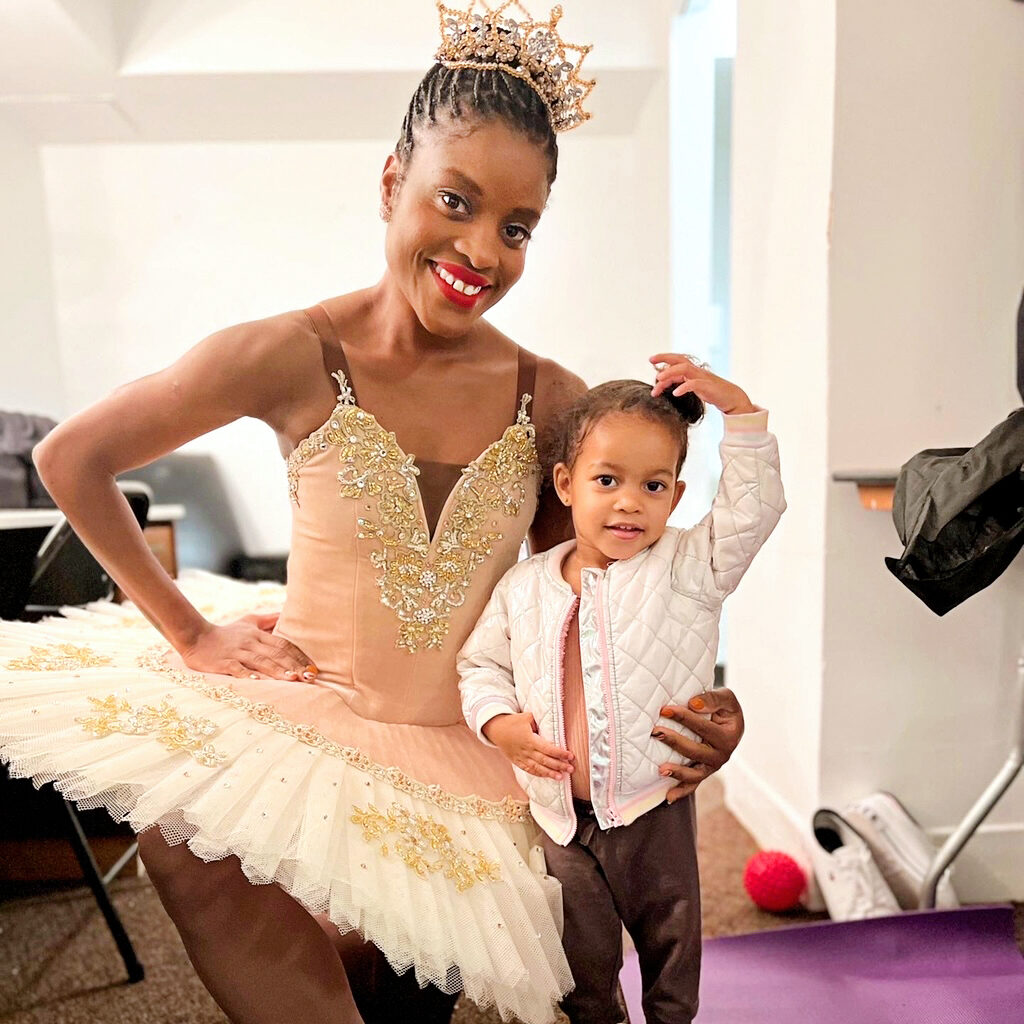
Challenging Old Norms
Many aspiring performers have grown up thinking dancing and motherhood were either/or tracks—or at least before-and-after chapters. Silva, for instance, observed a single-vision mindset where an artist “would abdicate their whole life just to dance.” Whitworth remembers assuming “it was something that you waited to do until after your career ended.” Similarly, Xin “definitely thought if you have a kid, then you have to stop dancing.” In DeBona’s case, “I didn’t start my career until I was 24,” she explains. “So the idea of having a child early on—I just felt like I was going to sabotage myself even more.”
There isn’t precise data quantifying the impact of these ingrained beliefs on the American dance world, in which women account for approximately 77 percent of dancers and choreographers. But “anecdotal information strongly indicates that women find it almost impossible to continue their careers after having children,” says Elizabeth Yntema, founder of the Dance Data Project, which asked the 50 largest ballet companies in the U.S. about pregnancy, leave and childcare policies as part of its recently released Gender Equity Index. “Often women choose to delay or forgo being a parent because of the utter lack of infrastructure.”
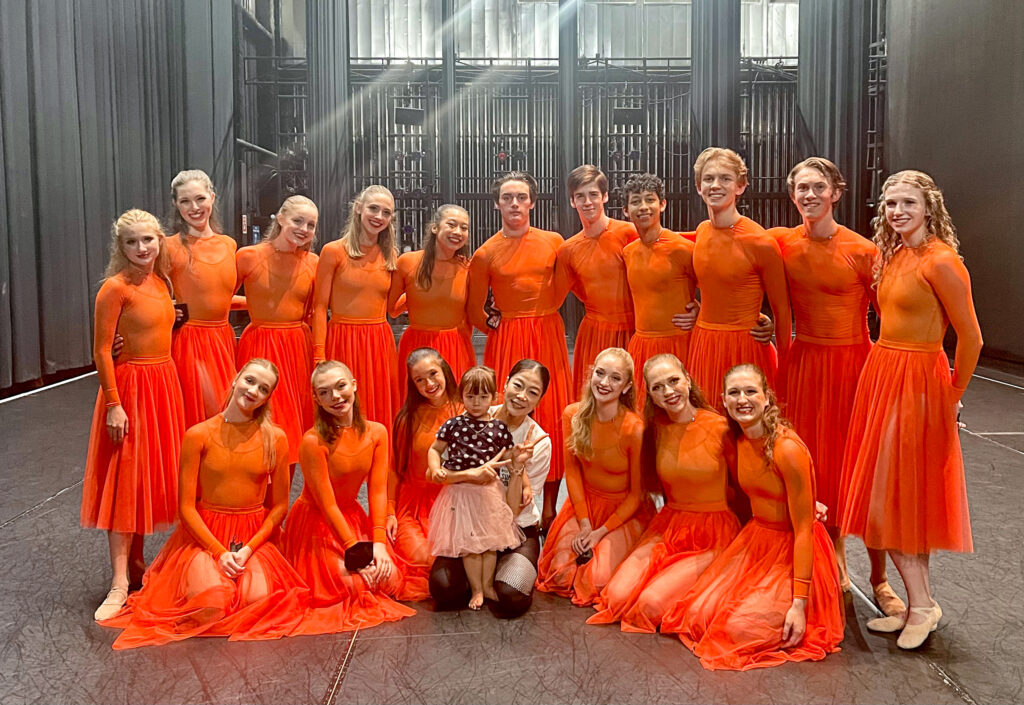
The founders of Dancers & Motherhood, and many of their colleagues, didn’t want to quit. Silva always wanted to be a mother, but “I’ve never just wanted to be a mother,” she says. “I also wanted to be myself, because I feel I am my best self onstage.” Dance is part of their identities they don’t want to just turn off. “I want my daughter to know who I am,” says Xin. “I worked my whole life to get myself here. I don’t want to give up.”
Observing the exceptions in the dance world has been helpful. For Silva, it was one of her first teachers, Bethania Gomes, who taught while pregnant. For Whitworth, it was Winifred Haun, a choreographer and mother of three she worked with in Chicago, and one of the first moms she knew who spoke about bringing her babies into the studio. For DeBona, there was the incomparable Julie Kent, sitting at the front of the room at Indiana University while pregnant with her son.
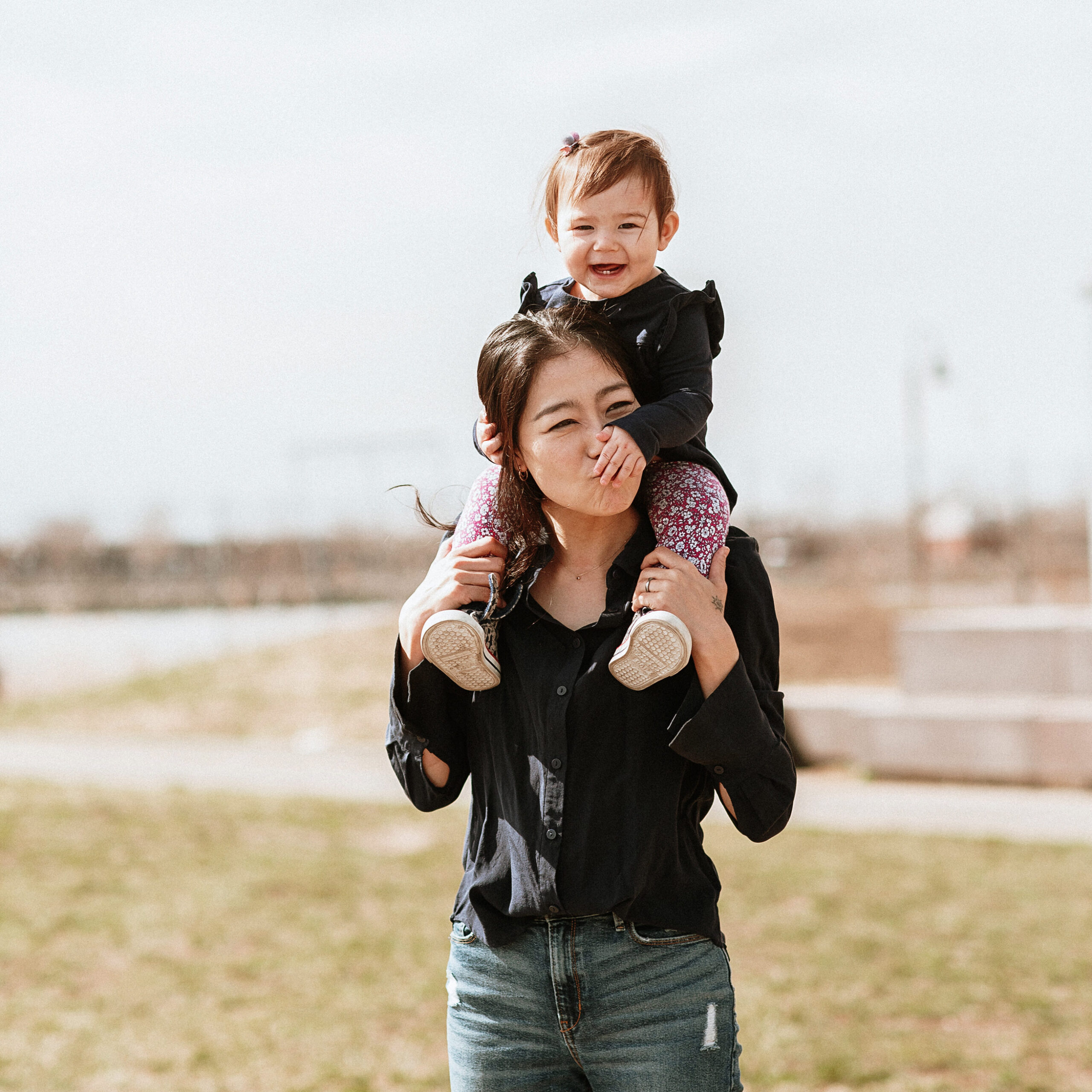
By the time the Dancers & Motherhood founders became parents themselves, it seemed there were more and more examples, which translated into comrades to turn to for support. Whitworth needed it when postpartum anxiety hit her hard in the isolation of pandemic lockdowns. DeBona needed it when she was back for her first Nutcracker season, still breastfeeding and exhausted and crying all the time. She realized later she had not been increasing her calorie intake enough to maintain breastfeeding and the heavy workload. They all found support—and practical advice—in the WhatsApp group and the side chats it spawned.
Silva, Whitworth, Xin and DeBona decided to take those conversations beyond the confines of a private chat, to make dance moms—and the highs and lows of their experiences—more visible to one another, to institutions and decision-makers, and to the next generation of dancers. They join efforts like Lucy McCrudden’s UK-based Dance Mama and “Moving Forces: Motherhood in Dance,” an interview series from Dance Data Project’s Rebecca Ferrell. “It’s important to share our journeys as artists” with one another, says Silva. “But it’s important to share with the world, too.”
Launching a New Platform
The first posts went live on Instagram in November—announcing the Dancers & Motherhood platform, introducing the founders and sharing their mission to “unite for a more inclusive dance world.” The founders hopped on an initial Zoom call before Thanksgiving to talk through everything from topics to color scheme. But since it’s nearly impossible to coordinate four dancing, touring, working mothers’ schedules, they have been managing the day-to-day logistics in a constant stream of Instagram and WhatsApp messages.
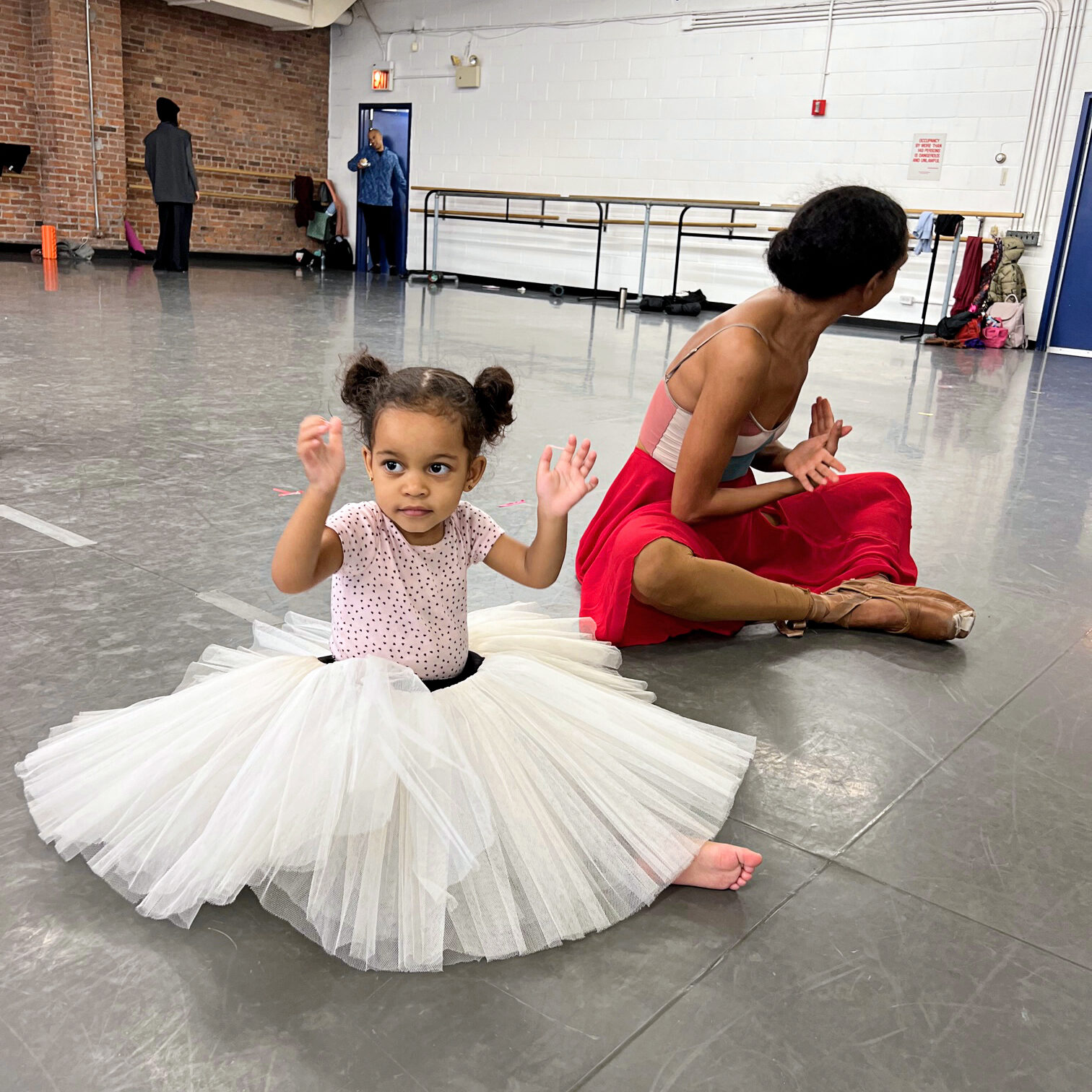
They’ve used their platform to post videos about what being dancers and mothers means to them, graphics listing postpartum dance bag must-haves, tips from experts about breastfeeding while dancing, photos and videos of their kids in the studio, prompts to their community, and quotes and stories they receive in comments and messages. They make space for the devastating, like the mostly anonymous sharing of biting remarks dancers have heard returning to work postpartum, and the promising, including stories of supportive artistic directors and companies.
“I found this to be a great way for messages to get out in a safe way, a supportive way, a real way,” says Chloe Freytag, a mother and dancer with Dimensions Dance Theatre of Miami who’s engaged regularly on Instagram. Haun—Whitworth’s dance-mother role model and the founder and artistic director of Winifred Haun & Dancers—has chimed in to share experiences and offer encouragement. “I want dancers who are mothers now to have it easier than I did,” she says. “Talking about it is a great start.”
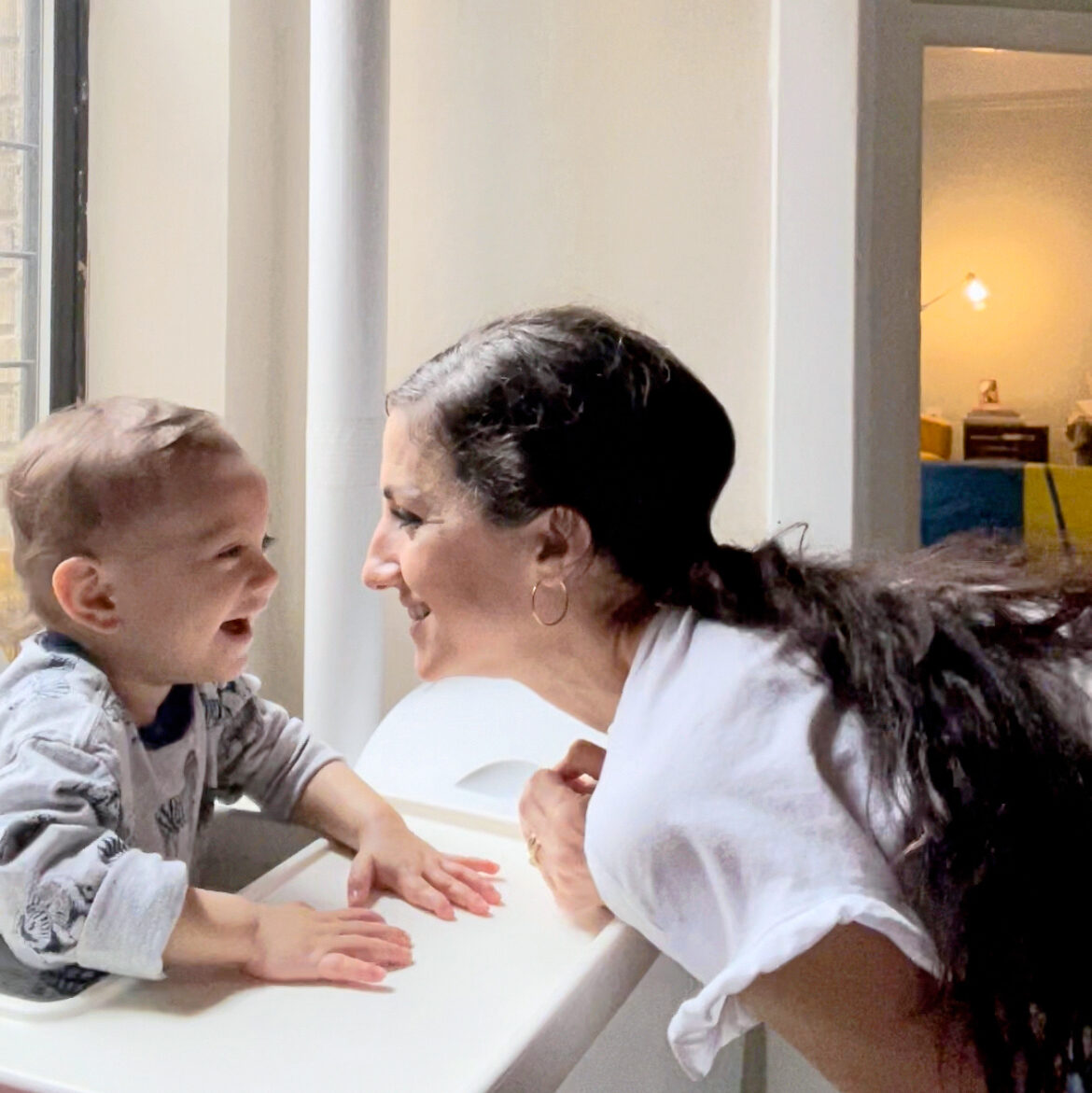
The founders are hoping to do much more. Silva envisions it as a group that’ll be “making new rules, and introducing them to companies to see what we can do together.” As a dance educator who’s recently retired from the stage—and is expecting her second child in September—DeBona wants to help establish policies rooted in the science of dancing women’s bodies from puberty to postpartum. “I’d love to get in front of directors and companies and say, ‘Here you go. You want to do the right thing? This is it.’ ” Xin would like to put together a program produced and performed by dance moms, complete with childcare, and offer a manual for others to build upon.
They all have their eye on the next generation. “I hope that the platform can be a way to show younger dancers that they don’t have to think like I used to think, that you have to end your career to have a family,” says Whitworth. For her, the timing is connected to the personal and collective upheavals of the pandemic years: “We kept saying, as a dance community, we don’t want to come back to the same dance community as it was before.” Their platform is one way to uphold a commitment to change.
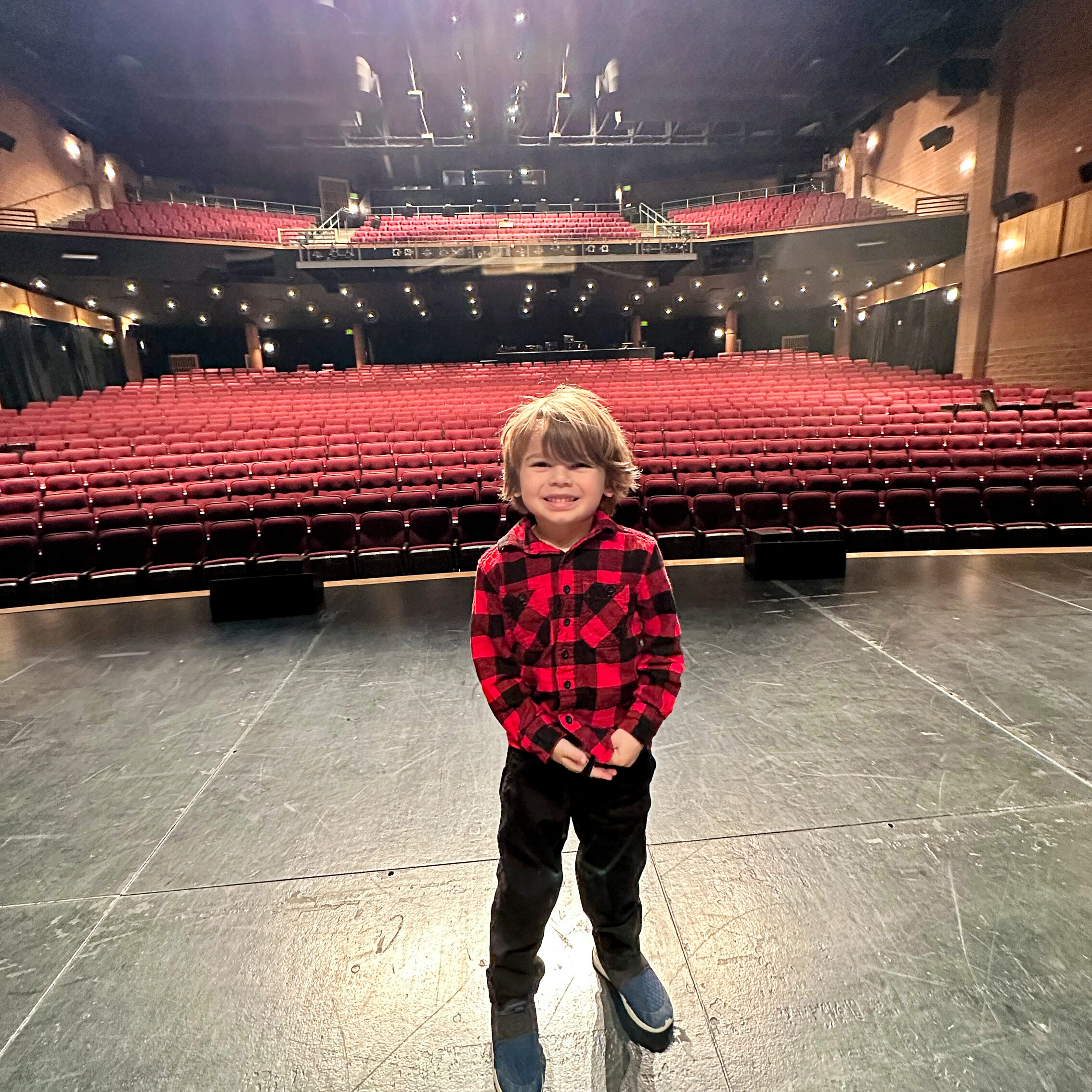
Creating the Future
In the summer of 2022, before Dancers & Motherhood had launched, Xin was headed to Utah to choreograph for the annual Choreographic Workshop at artÉmotion, run by DeBona and her husband, Rex Tilton. The two-week residency followed a three-week tour that Xin wasn’t able to bring Frankie to. “I just thought I was dying,” Xin says. “I need to take my baby with me.” So she messaged DeBona to ask. The response was an immediate and resounding yes.
DeBona enlisted babysitting help from an older student and brought her son Ajax to the studio, too. Ajax and Xin’s daughter Frankie quickly bonded, holding hands and dancing together. Xin could see them through the windows of the studio, doing crafts, eating snacks and being goofy. Tilton took them into empty rooms to run around and dance. And, occasionally, Frankie would come in to watch rehearsal.
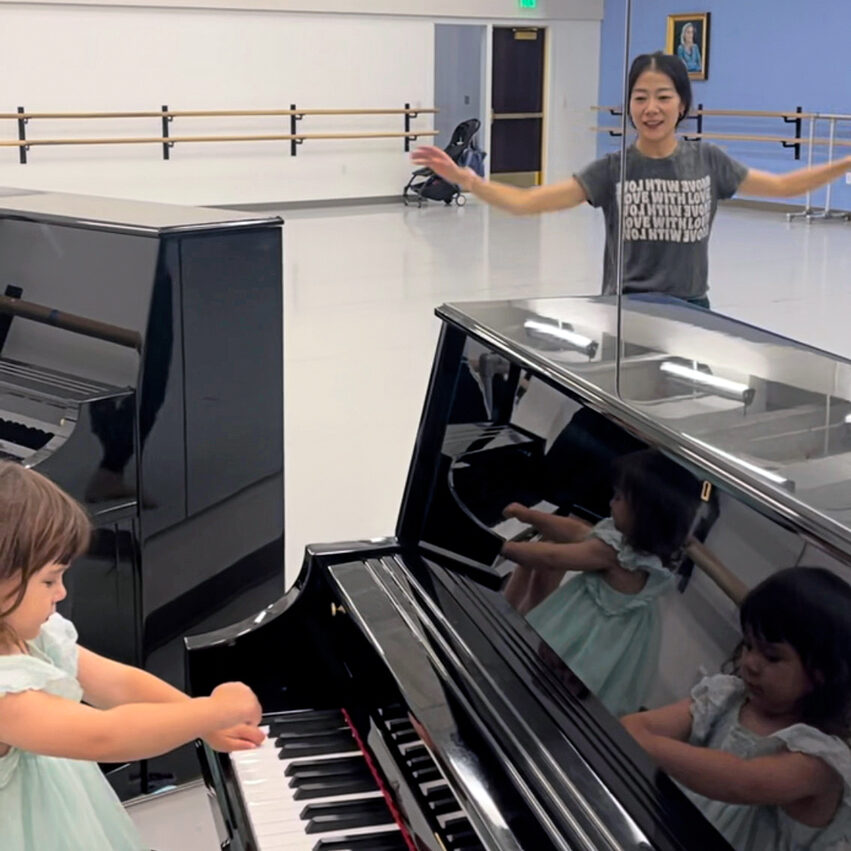
“My heart was so happy,” says Xin. “It’s the ideal situation, the ideal world, almost like dreaming.” And all the students in the studio witnessed the example of having both a dance career and a family. “It’s not going to be easy. It’s gonna be messy,” Xin says, “but everything is possible.”
The trip was a glimpse of a future the founders of Dancers & Motherhood are imagining—and determined to bring to fruition. There’s still a long way to go, DeBona admits. But “when our generation are directors of companies, I think you’re gonna see big changes.”
